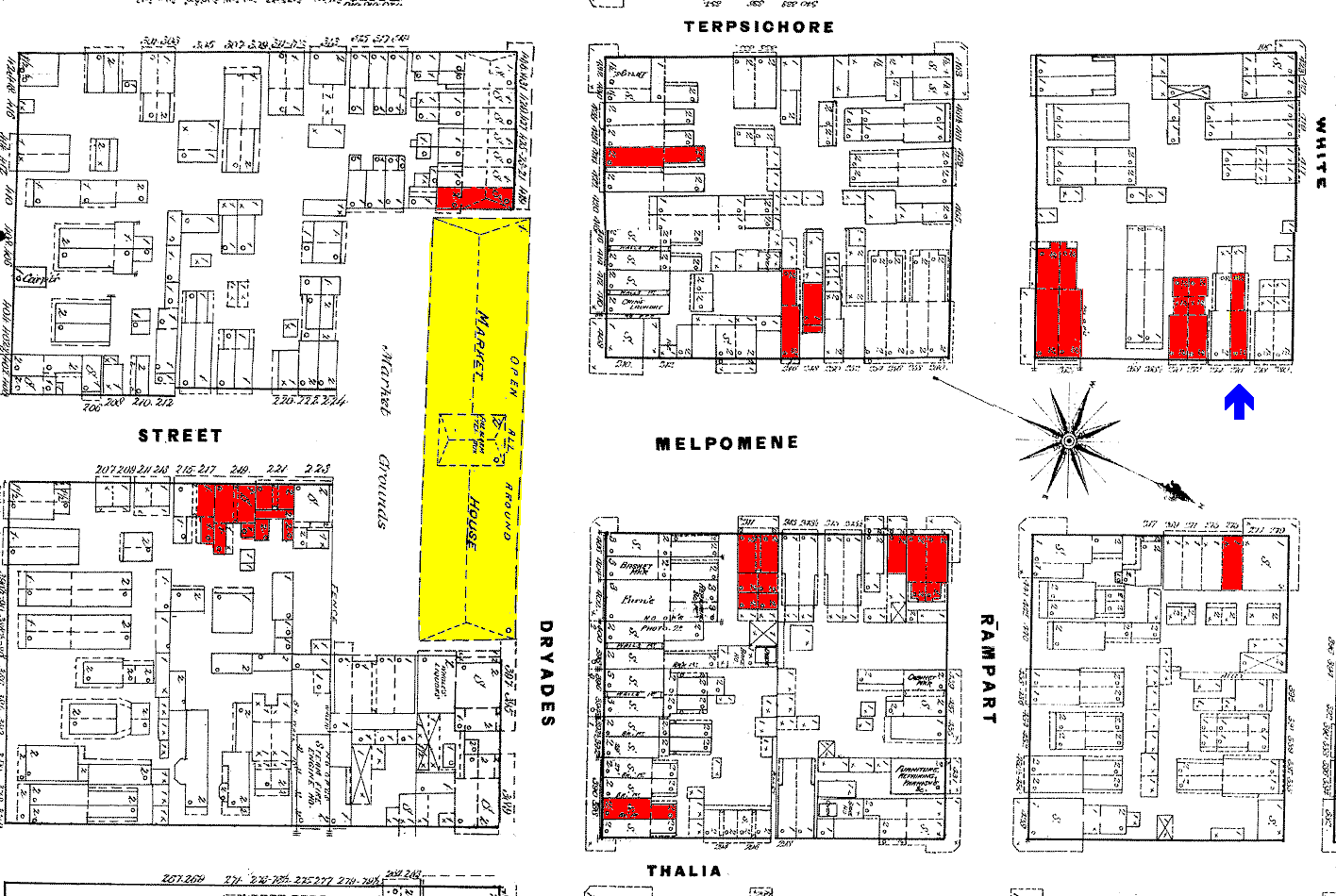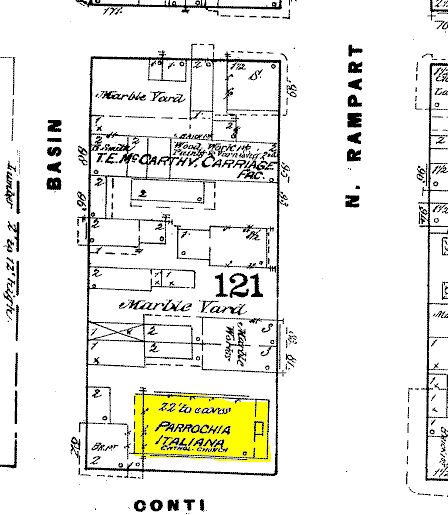

 |
The Ustica Connection |  |
The Society's Early Years
And so, our society’s formation and first feast day celebration were announced in the local papers 125 years ago. Details of the feast day celebration would continue to be printed each year in the Picayune and other local papers for the next 13 years providing us with a rare glimpse into the early years of our Society and the life of the Usticese community in New Orleans. Families naturally chose their homes around the many open-air markets where they made their living selling fruits, vegetables, wood and coal, oysters and various other commodities. The church was also a focal point of their lives and it was here that they all came together, along with rest of the community both Italian and non-Italian, to pay proper homage to their patron Saint. The San Bartolomeo Feast Day celebration was a grand event lasting the entire day and involving hundreds of participants. For one day, the city paused and took note of energetic and united community of Usticesi in New Orleans.
The Dryades corridor contained the greatest concentration of Usticesi in New Orleans
i and it is at this location that the San Bartolomeo Society would be formed in 1879. A large open-air market stood at the corner of Melpomene and Dryades Streets where at least 8 of the vendors were Usticesi. ii These same vendors as well as other Usticesi families lived near the market. The first officers of the Society were Agostino Mazzola, President; John Bertucci, Vice-President; Felice Bertucci, Secretary; Francesco Licciardi, Treasurer; and Lorenzo Rajolla (probably Ingargiola), Marshal. Other Usticesi families clustered around the other main markets of the city, the Poydras and Pilie Markets, side by side on Poydras Street, the Orleans Market on Orleans Street behind Congo Square, and the Magazine Market further uptown. Today, none of these markets exist though some remnants of them remain and have been adapted for modern use.
The meeting hall of the Society on Melpomene Street served as the starting point for the feast day activities. At its height, as many as 275 men participated in the parade that would wind its way from the meeting hall through the main streets of the city (which included “Newspaper Row” on Camp Street ensuring that their celebration would be recorded in the local papers). The parade ended at the church were elaborate services were held. The day also included a gun salute from the Orleans Artillery, raffles of gold watches, speeches from dignitaries and lots of eating, of course. The days activities often concluded with a fireworks display.
These early accounts of the San Bartolomeo Feast Day celebrations depict a large, tightly-knit community of Usticesi in New Orleans during the 1880’s. Today our community is widely dispersed throughout the metropolitan New Orleans area. Though many of the grand traditions of those days are gone, we have steadfastly kept the San Bartolomeo Society alive and well for the past 125 years and look forward to many more years celebrating and promoting our special heritage.
NOTE: Text from the original Daily Picayune articles used in this report can be seen at the Society website: http://www.ustica.org/san_bartolomeo, Sanborn Fire Insurance Maps are available on-line for Louisiana library card holders at http://lalibcon.state.lib.la.us/
By Chris Caravella
“St. Bartholomew’s Day was appropriately celebrated yesterday at the church corner of Rampart and Conti streets by the Congregazione E Fratellanza Degli Italiani Usticani. The society was organized last April and it already numbers over a hundred members. …”
The New Orleans Daily Picayune – August 25, 1879
“… The members of the St. Bartholomew Society assembled about noon at their hall, No. 276 Melpomene street, and transacted some society business. They then paraded the principle streets, formed in two divisions, with a band at the head of each, and presented a fine appearance, the marshal and aids being mounted and the guests in carriages. …”
The New Orleans Daily Picyune – August 25, 1884 
The Dryades Market corridor. Usticesi residences, as indicated from the 1880 Census or 1886 New Orleans City Directory, are marked in red. The San Bartolomeo meeting hall is marked by the blue arrow.
“The antique looking church of St. Anthony of Padua, corner of Rampart and Conti streets, is the Italian site of worship. The interior of the edifice has a peculiar appearance – the altars being very richly adorned and there being an abundance of saintly images and pictures. The altar to the left of the main one is dedicated to St. Bartholomew. Among the numerous images there is a lifesize one of the saint.”
The New Orleans Daily Picayune – August 25, 1887
St Anthony of Padua Church iii was the place of worship for all of the Usticesi families regardless of which neighborhood their families were from. The primary reason was because the pastor, Father Giacomo Manoritta preached in Italian and could serve the special needs of the Italian community. This was such a defining aspect of the church that its name doesn’t even appear on the 1885 map of the area. It simply says “Parrochia Italiana” which in English means Italian Parish
iv. In the left apse of the church stood the statue of San Bartolomeo. The apse formed a small shrine where devotees would pray to the Saint and leave behind ex-votos and other objects representing the maladies that they wished to have cured. For the feast day celebration, the shrine was decorated with candles and paper flowers. Mass was said in Italian with full choral arrangements. At the height of the feast day activities in 1886, masses were being held at both St Anthony’s and at the St. Louis Cathedral in honor of San Bartolomeo.

“Parrochia Italiana”. St Anthony of Padua Church as depicted in the 1885 Sanborn Fire Insurance Maps of New Orleans.
i Derived from the 1880 US Census of New Orleans. Addresses of families bearing Usticesi surnames were extracted and mapped on Sanborn Fire Insurance Maps of the city from 1885.
ii Derived from entries in the 1886 New Orleans City Directory of persons bearing Usticesi surnames who were also listed as working in the Dryades Market.
iii Today this church is known as Our Lady of Guadalupe Church or informally as the Old Mortuary Chapel. St. Anthony of Padua moved to its current location at Canal and Olympia Streets in 1910.
iv
In the 20th century, St Mary’s Church in the French Quarter would acquire the honor of being known as the Italian Parish.